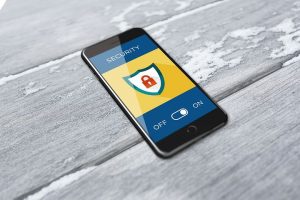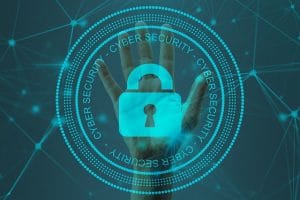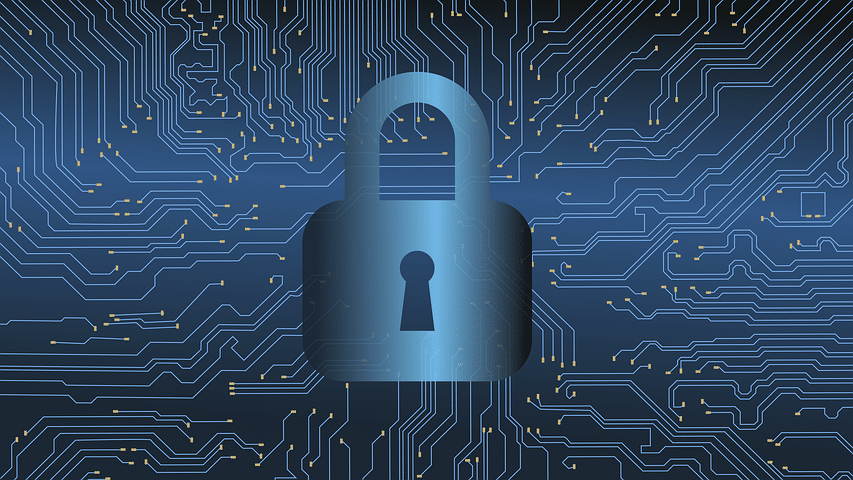How much do you really know about cyber security? Are you aware of the threats facing your organization? How can you better protect your network from hackers?

What is Cyber Security?
Cyber security is the protection against cyber attacks from malicious entities who would seek to steal data, gain unauthorized access to computer systems, destroy records or otherwise cause harm. This definition can vary depending on whom you speak with, however, the general consensus is that cyber security is the practice of protecting computers and networks from external threats.

Why is Cyber Security Important?
The world of technology has become increasingly interconnected through the use of the Internet, mobile devices, and digital media. As this interconnection continues to increase, many organizations are realizing that their sensitive information (both intellectual property and customer/client data) may be at risk due to increasing security breaches. In order to protect themselves from potential loss, companies must implement cybersecurity measures.
The Internet is now everywhere, and we rely on it every day.
From personal computers to smartphones, the Internet has changed the way we live and work. And with the rise of cloud computing, businesses are also relying on the Internet to store data and run their operations. This means that cybersecurity is becoming even more crucial.
As the Internet continues to evolve, so does its potential for harm. Hackers are constantly looking for ways to exploit vulnerabilities in systems and networks. In order to stay safe from these threats, it’s important to understand the basics of computer network defense (CND

What is computer network defense (CND)?
Computer networks are the backbone of modern society. They connect computers, servers, printers, routers, and other devices together to form a single system. These systems allow us to communicate, share information, and collaborate.
The typical computer network consists of servers (computers that run programs), clients (computers that access the server), and other devices such as printers, scanners, and fax machines. Most businesses today rely heavily on their computer networks to operate efficiently.
A computer network is vulnerable to attacks from hackers who want to steal data or disrupt operations. CND involves monitoring, detecting, responding, and recovering from these threats.
Hackers can gain access to your personal data through your computer network. This can include passwords, credit card numbers, social security numbers, and other sensitive information. In addition, cybercriminals can take control of your computer system, causing it to crash or slow down.

How to effectively secure your computer network?
As the number of Internet users increases every year, cybercriminals also create new ways to exploit vulnerabilities in order to steal information or gain unauthorized access to systems. In order to mitigate these risks, organizations should implement effective security measures.
1. Security Software
This should be the first thing that any business owner installs on their computers. You never know what someone might do if they have access to sensitive information. Also, if you are not careful with what programs you download onto your computer, you could easily infect your entire computer system with malware. Cybercriminals may use malware to steal personal data about you and your employees, or just take control of your machine and cause havoc.
2. Firewall
Firewalls are a great way to protect your computer from getting infected with malware and viruses. Firewall software allows you to prevent unauthorized access to ports that should be protected. This can help prevent hackers from stealing information over the internet. Firewalls can be used to block incoming or outgoing connections. This can also be used to monitor network activity. You may run several different types of firewall software on multiple devices like computers and smartphones. When setting up a firewall, you have two options: allow or deny. If you select allow, any traffic coming through this port will be able to pass through. If you choose to deny it, the connection will not be allowed.
A firewall keeps hackers out of your network and prevents them from accessing sensitive data. A firewall is like a perimeter wall of your house; it’s used to protect your home. This type of security solution gives you control over what can enter your network and what cannot. If someone breaks into your computer system, your firewall stops them from entering your entire network. A firewall monitors incoming traffic and blocks any unauthorized attempts to access your computers.
3. Antivirus Software
AntiVirus software (AV) protects your PC against viruses and other malicious software. AVs scan files before opening them, remove infected files, and prevent harmful documents from being opened in the future. Your antivirus program should be updated regularly and always run in stealth mode, so no one knows it’s running.
Virus protection software is used to protect your computer from viruses that may harm your system. There are many types of virus protection software out there but not all of them work equally well. Some are good at detecting viruses while others are better at removing them. In this article, we will discuss some of the best anti-virus programs currently available.
Antivirus software has become a necessity for everyone who uses the Internet. There are three main categories of antivirus software: free, paid, and cloud-based.
Antivirus programs are designed to detect and remove malicious software from computers. They also provide protection against phishing attacks, spam emails, and other threats.
Free antivirus software is usually limited in functionality and features. Paid antivirus software offers better performance and additional security tools. Cloud-based antivirus software is convenient because it allows you to access your files remotely.
1. Windows Defender
Windows Defender is built into Windows operating systems and is considered the standard antivirus program. It has been around for quite some time now and has proven to be reliable and effective. It can detect and remove viruses, worms, spyware, adware, and other malicious threats. However, it does have its limitations. First off, it cannot scan removable media like USB drives, CDs, DVDs, etc. Secondly, it does not provide real-time protection against malware. Lastly, it only works on Microsoft Windows Operating Systems.
2. McAfee
McAfee is one of the oldest and most trusted brands in the world of antivirus software. They offer both free and paid versions of their product. Their free version comes with basic features and is recommended for home use. If you want something more robust, then you should go for the paid version. This version offers real-time protection and allows you to schedule scans. It also provides remote access to your computer if needed.
3. Avira Antivirus Personal Edition
Avira Antivirus Personal edition is free antivirus software that offers real-time protection against viruses, spyware, adware, worms, Trojans, dialers, rootkits, and other malicious threats. This antivirus program can be used on Windows XP, Vista, 7, 8, 10, Mac OS X, Linux, and Android devices.
4. AVG Internet Security
AVG Internet Security is a free antivirus and firewall software that provides real-time protection against malware, viruses, spyware, phishing attacks, spam, online scams, identity theft, and other security risks. With this software, you can protect your PC from harmful websites, prevent identity theft, and secure your Personal Information.
5. Bitdefender Total Security
Bitdefender Total Security is a free antivirus, antispyware, rootkit, and firewall software that protects your computer against malware, viruses, trojans, spyware, hackers, identity thieves, and other cybercriminals. This antivirus software includes a built-in web browser that blocks dangerous sites, and it has a firewall feature that prevents unauthorized access to your network.
In conclusion, it’s essential to protect yourself from cyber threats with antivirus software, which helps keep you safe while using computers, smartphones, tablets, and other internet-connected devices.
Intrusion detection systems
Intrusion detection systems (IDS) are used to detect unauthorized access to networks. They can be either hardware-based or software-based. Hardware-based IDSs use sensors that are placed at various points around the network perimeter. These sensors monitor traffic passing through them and alert security personnel if any suspicious activity occurs. Software-based IDSs work similarly but instead of using physical sensors, they rely on monitoring the behavior of the network itself. This allows them to identify intrusions before they occur.
An intrusion detection system (IDS) is a device that monitors network traffic for suspicious activity. An IDS can detect intrusions into computer networks, including viruses, worms, Trojans, spyware, adware, rootkits, loggers, etc. A typical IDS consists of three major components: sensors, pre-processing modules, and post-processing modules. Sensors are devices that watch for suspicious activity. They may be hardware devices like card readers, cameras, microphones, etc., or software programs running on a host machine. Pre-processing modules analyze the data collected by the sensors. This analysis typically involves filtering out normal traffic from malicious traffic, identifying patterns in the traffic, and classifying the traffic based on its content. Post-processing modules perform actions based on the results of the previous steps. These actions include notifying administrators about detected threats, blocking access to infected hosts, isolating infected hosts, and removing malware from compromised systems.
An Intrusion prevention system
An Intrusion prevention system (IPS) is a type of IDS that works by detecting malicious code and stopping it from executing. IPSs are usually installed on servers and work by analyzing the data packets being sent over the network. If the packet contains any known malware, then the IPS will block the packet from reaching its destination.
In conclusion, intrusion detection systems can be used to monitor networks for suspicious activities, helping organizations prevent potential attacks and improve their security posture.
Cryptography
Cryptography is the practice of encoding messages in such a way that only authorized parties can read them. Cryptography is used in many fields, including military communications, banking, and computer security. In cryptography, the term “encryption” refers to the transformation of data into ciphertext (encrypted) using an algorithm, while the term “decryption” refers to transforming ciphertext back into plaintext using the same algorithm.
In the field of information security, cryptography has two basic purposes: confidentiality and integrity. Confidentiality means ensuring that only intended recipients can access the message content; integrity means making sure that no changes have been made to the message after it was sent.
The goal of cryptography Is to provide a secure communication channel between two entities without allowing eavesdroppers to intercept or modify the transmitted information. This is achieved through encryption and authentication.
Encryption transforms the original message into ciphertext, which cannot be understood by anyone except those who possess the secret decryption key. Authentication ensures that the sender of the message is actually who he claims to be.
There are three types of cryptography
symmetric-key cryptography, asymmetric-key cryptography, and public-key cryptography. Symmetric-key cryptography uses a single key to encrypt and decrypt the message. Asymmetric-key cryptography uses different keys for encryption and decryption. Public-key cryptography relies on mathematically related keys known as public and private keys.
Symmetric-key algorithms include DES, triple DES, RC4, IDEA, Blowfish, AES, and Twofish. They use a single key to both encrypt and decrypt the message, but they require large amounts of computing power to perform the calculations.
In conclusion, cryptography is used to protect sensitive information from being intercepted or stolen. This includes email encryption, which is one of the most important security measures you can take.
